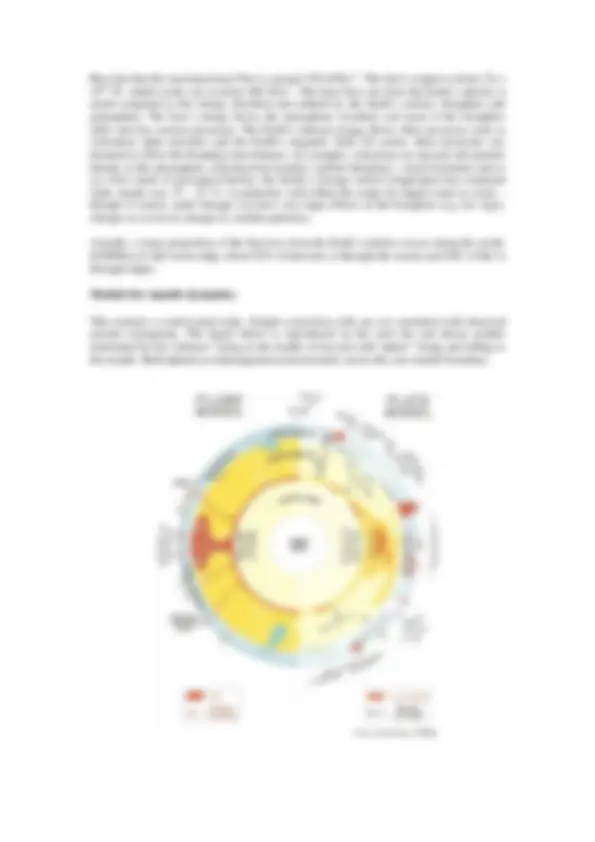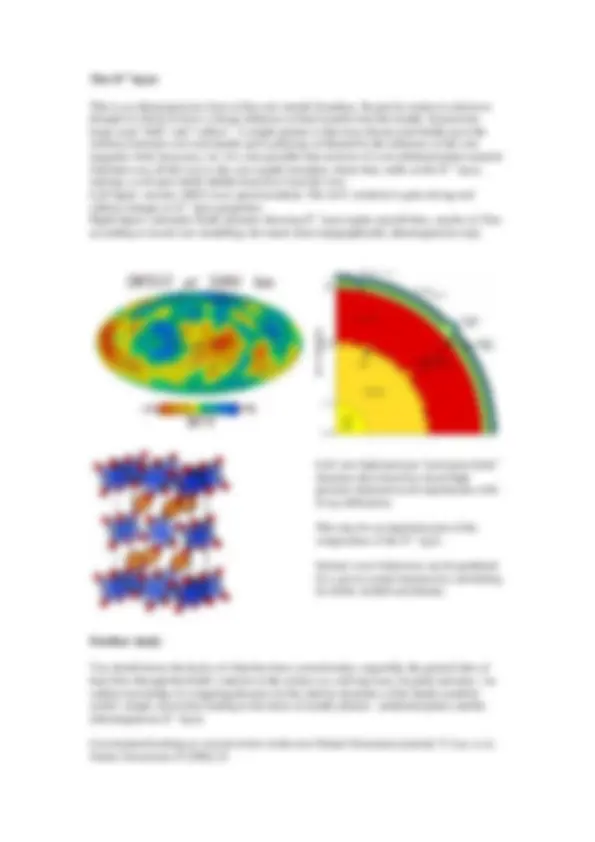




Study with the several resources on Docsity

Earn points by helping other students or get them with a premium plan


Prepare for your exams
Study with the several resources on Docsity

Earn points to download
Earn points by helping other students or get them with a premium plan
Community
Ask the community for help and clear up your study doubts
Discover the best universities in your country according to Docsity users
Free resources
Download our free guides on studying techniques, anxiety management strategies, and thesis advice from Docsity tutors
Overview of head budget and earth Heat flow and depth of oceans, convection in mantle, thermal structure of core
Typology: Study notes
1 / 4

This page cannot be seen from the preview
Don't miss anything!



The Earth’s interior is hot (nearly 6000 K at the centre). Part of this heat energy was derived from the formation process of the Earth, during which the proto-Earth was bombarded by planetesimals and other early Solar System material. Their kinetic energy was converted to heat energy during this accretion process. Self-compression of the proto-Earth under its own gravitational attraction releases further gravitational potential energy, again converted to heat. Radioactive heating is also crucial. The energy of fission products (e.g. beta particles) produces the fission heating effects. For example, 40-K to 40-Ca or 40Ar produces about 2.8×10-5^ W kg-1, while for 208-U to 206-Pb it is about 9.4×10-5^ W kg-1. Radioactive heating therefore appears rather puny (fascinating facts #344: one cubic centimetre of granite would take half a billion years to boil the water for a cup of tea), but over the large volume of the Earth’s interior and over geological time it is hugely important.
William Thomson (Lord Kelvin) estimated the age of the Earth by guessing its initial heat energy, assuming it was molten, and then calculating the heat flow through the surface. His argument was mathematically sophisticated (using Fourier’s brand new heat flow equations) and he refined his calculations over the years, always in the direction of a younger Earth. But he was unaware of radioactive heating, and his final value of 24 million years, given with no error bars, is woefully small. Many geologists, faced with enormously thick sedimentary strata, and biologists, armed with fossil evidence in the framework of Darwin’s ideas, vehemently disagreed with Kelvin’s estimate. Figure 2 – an X-ray of Lord Kelvin’s hand, from the book ‘Light, Visible and Invisible’, 1923. Kelvin was not in a position to include radioactive heating in his calculations. Huxley: Mathematics may be compared to a mill of exquisite workmanship, which grinds you stuff of any degree of fineness; but, nevertheless, what you get out depends upon what you put in; and as the grandest mill in the world will not extract wheat-flour from peascod, so pages of formulae will not get a definite result out of loose data. [ = garbage in, garbage out] Boswell: That fellow seems to possess but one idea, and it is wrong. Farnsworth: Baldercrap!
Figure from Lowrie. Below the solidus line, all the material is solid (i.e. liquid phases begin to exist at higher temperatures). The figure shows the solidus for the dominant materials, as a function of depth (it increases with depth due to increasing pressure).
Heat is transferred through the Earth from the core, largely by advection in the mantle (motion of hot material) rather than conduction (heat flow through stationary material). Self-compression models work best when adjusted for super-adiabatic temperature distribution through the mantle. The slightly steeper temperature gradient than expected drives convection-like processes in the (highly viscous) mantle. The figure below shows heat flow from the Earth’s interior across the USA. There is much more structure in the heat flow map on the western portion of the continent. For example, the Yellowstone region may perhaps sit above a ‘deep-mantle plume’ (or perhaps not! See http://www.mantleplumes.org/Yellowstone.html).
This is an inhomogeneous layer at the core-mantle boundary. Its precise nature is unknown though it is likely to have a strong influence on heat transfer into the mantle. It possesses large-scale “hills” and “valleys”. A simple picture is that iron silicate crud builds up at the interface between core and mantle and is piled up or thinned by the influence of the core magnetic field, buoyancy, etc. It is also possible that sections of cool subducted plate material find their way all the way to the core-mantle boundary where they settle on the D’’ layer, making a cool spot which inhibits heat flow from the core. Left figure: seismic (SKS) wave speed residuals. The ±4% variation is quite strong and reflects changes in D’’ layer properties. Right figure: schematic Earth structure showing D’’ layer (quite smooth base, maybe ±1.5km according to recent core modelling, but much more topographically inhomogeneous top). Left: new high pressure “post-perovskite” structure discovered by recent high pressure diamond anvil experiments with X-ray diffraction. This may be an important part of the composition of the D’’ layer. Seismic wave behaviour can be predicted for a given crystal structure by calculating its elastic moduli and density.
You should know the basics of what has been covered today, especially the general idea of heat flow through the Earth’s interior to the surface as a driving force for plate tectonics. An outline knowledge of competing theories for the interior dynamics of the Earth would be useful: simple convection leading to the ideas of mantle plumes, subducted plates and the inhomogeneous D’’ layer. I recommend looking at a recent review in the new Nature Geoscience journal: T. Lay et al. , Nature Geoscience 1 (2008) 25.